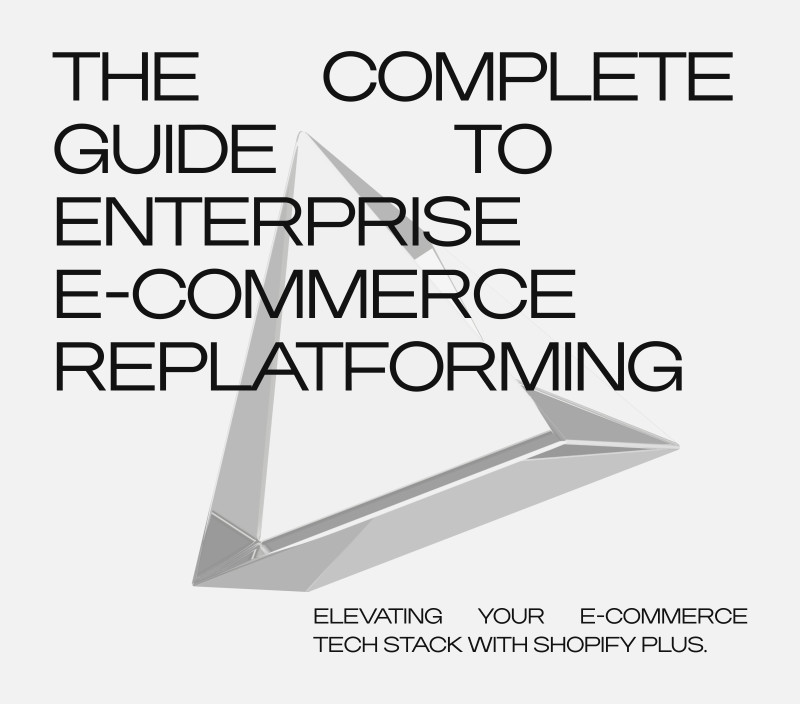E-commerce Trends Leading the Way in 2024

Quick Summary In an age propelled by digitization and connectivity, the imperative for businesses to initiate and fortify online D2C strategies has never been more compelling. What are the ecommerce trends pushing the industry forward? Uncover some of the most prominent stats that will give you a better understanding of consumers’ behaviors and expectations in 2024.
In an age propelled by digitization and connectivity, the imperative for businesses to initiate and fortify online D2C strategies has never been more compelling. Yet, the hurdles in doing so have grown significantly as the market adjusts to a post-pandemic landscape marked by inflationary shocks, shifts in consumer shopping behaviors, increased acquisition costs, and diminished brand loyalty.
That being acknowledged, the success of brands in the progressively competitive online landscape now hinges more on their capability to push boundaries, innovate beyond traditional methods, and recognize eCommerce as a necessity rather than a mere growth opportunity.
To do so, merchants must be informed about the ecommerce trends pushing the industry forward. In this blog, we’ll uncover some of the most prominent stats that will give you a better understanding of consumers’ behaviors and expectations.
Increased Adoption of AI
As 2023 buzzed with discussions about generative AI, industry leaders are now pointing to the transformative influence of machine learning and artificial intelligence set to dominate the narrative in 2024. Compelling statistics substantiate the surge of AI in the e-commerce landscape. 84% of e-commerce enterprises are either in the process of implementing AI solutions or have marked it as a top priority for their business development in the years to come. Forecasts also reveal that the AI-enabled e-commerce market is anticipated to hit $16.8 billion by 2030, with a notable compound annual growth rate (CAGR) of 15.7% over the next eight years.
Picture this: a prominent fast-fashion brand strategically releases products on its site in modest quantities, keenly observing their reception. Witness the magic as popular items trigger an automatic, real-time surge in manufacturing orders through the ERP system. This dynamic approach enables the brand to mold its product lifecycle according to the ebb and flow of user interactions. This is not science fiction; Shein is deploying AI to reshape the fabric of e-commerce, where adaptability is king and customer-centricity reigns supreme.
AI offers myriad advantages to businesses, with e-commerce reaping significant benefits such as time savings, risk reduction, and a heightened focus on customer needs. Here's the essence of it:
Personalization: Among the most potent applications of AI in e-commerce lies personalization. By harnessing AI capabilities, merchants can tailor the shopping experience for each customer, utilizing data from their browsing and purchase history to suggest products and services aligned with their preferences. Demonstrated consistently, personalized experiences foster brand loyalty—a crucial success metric in today's increasingly saturated market, where consumer spending is impacted by the rising cost of living.
Predictive Analytics: AI's predictive nature proves invaluable in anticipating purchasing patterns, refining inventory and pricing strategies, and foreseeing future industry trends. A prime example is H&M, which employs predictive AI to discern which products to highlight based on order and returns data. This algorithmic insight guides the brand in promoting trending products and determining the optimal product stock for various markets.
Time-saving: Beyond its advanced functionalities, AI serves as a time-saving catalyst by automating routine tasks such as order processing and customer support. This automation liberates employees to concentrate on more intricate tasks requiring human ingenuity. The resultant time and efficiency gains translate into cost savings, fortifying the overall effectiveness of business operations.
Omnichannel Takes Center Stage
According to the PWC 2023 Global Consumer Insights Pulse Survey, 54% of consumers conduct product research on search engines before intending to make a purchase, with 43% turning to Amazon, 26% utilizing social media, and 19% visiting direct-to-consumer websites. The conventional dichotomy of in-store versus online shopping is evolving into a dynamic journey where consumers initiate their search in one location and finalize their purchase in another.
However, not every channel serves as a direct sales driver. As we approach 2024, retailers must discern where their audience discovers products, delves deeper into understanding them, and ultimately makes purchases. Whether this entire process unfolds within a single channel or spans across multiple platforms, the pivotal factor lies in ensuring a seamless and consistent experience. Regardless of the interaction point, be it a discovery, learning, or purchase, the brand should exude a unified feel, seamlessly transitioning from one interaction to the next. This cohesion marks the true key to achieving omnichannel success.
In 2024, the winning e-commerce sites will excel in facilitating seamless purchases through various channels, including their DTC storefront, social commerce platforms, online marketplaces, brick-and-mortar stores, voice assistant integrations, and more.
E-commerce platforms like Shopify are at the forefront of this evolution, simplifying the process of meeting the diverse needs of modern customers. Regardless of the sales channel you opt for, rest assured that there's a Shopify app to streamline the experience—eliminating the need to upload inventory data to a new platform.
Rise of Social Commerce
In the upcoming year, eMarketer forecast anticipates that social commerce sales in the US will reach $82.82 billion, exhibiting a robust year-on-year growth of 23.5%. The driving force behind this surge is expected to be Generation Z, as data from Jungle Scout indicates that this demographic is significantly more inclined to make purchases through social platforms than the overall population. Following closely behind is Generation Alpha, who, despite their young age, are actively discovering brands through social media channels. This trend is poised to contribute to even greater social commerce sales in the future.
The Shopify 2023 Trend Report has unveiled a noteworthy response among eCommerce brands, indicating that around one-third of businesses are gearing up to amplify their investments in social media marketing as a pivotal strategy for expanding their enterprises in the coming years. This surge in interest is underpinned by the recognition that positive interactions with brands on social media wield significant influence over consumer behavior. Statistics highlight that 78% of consumers become more predisposed to making purchases from brands with such positive interactions, 77% are likelier to choose them over competitors, and 72% are inclined to increase their spending.
For brands strategically embracing and harnessing social commerce, the potential rewards include heightened sales, increased brand visibility, and enhanced customer engagement. However, the key lies in meticulous planning and execution of social commerce strategies to unlock and fully capitalize on this promising potential.
Shopify seamlessly integrates with the most popular social media platforms online, including Facebook, Instagram, TikTok, and Pinterest, providing you with the opportunity to connect with millions of potential customers in the spaces they frequent. This not only reduces friction in the buying process but also amplifies your sales efforts.
Social Commerce for Shopify Merchants
Reduced Conversions Amid Rising Inflation Pressures
In the unfolding narrative of e-commerce in 2023, the looming specter of inflation proves to be a multifaceted challenge for online retailers. As the cost of living rises, consumers are becoming more discerning in their online purchasing decisions, seeking value and affordability.
E-commerce platforms grapple with the delicate balance of maintaining competitive pricing while coping with increased operational costs. The ripple effects of inflation are palpable throughout the supply chain, with logistics and fulfillment services experiencing disruptions that contribute to delays and heightened expenses.
Looking towards 2024, the global economy is on track but has yet to be out of the woods. The IMF projects global inflation to decline from 8.7 percent last year to 6.8 percent this year, a 0.2 percentage point downward revision, and 5.2 percent in 2024.
However, as the economy stabilizes, the e-commerce landscape is still poised for further transformation, with businesses exploring innovative pricing strategies, supply chain optimizations, and technological advancements to mitigate the impact of inflation. The resilience and adaptability of e-commerce players will undoubtedly be put to the test as they navigate the economic currents and strive to deliver seamless and cost-effective shopping experiences to consumers amidst the challenges posed by inflationary pressures.
Heightened Emphasis on Community Building
In the heyday of advertising's golden era, brands flourished through mass media, leveraging the extensive reach symbolized by the metaphorical "megaphone." However, the growing stringency of privacy policies presents a challenge for merchants relying on third-party data to deliver customized ads to targeted consumer segments. Despite these obstacles, technological and data advancements have ushered in the age of personalization, empowering marketers to tailor their approaches based on individual demographics and preferences.
Looking forward to 2024, a more optimistic perspective emerges. Global advertising spending is anticipated to grow by 4.4% in 2023 and an additional 8.2% in 2024, surpassing $1 trillion in total spending for the first time, according to WARC’s Global Ad Spend Outlook 2023/24.
However, in the contemporary landscape, consumers exhibit a notable preference for brands that offer emotional resonance rather than mass-targeting. As we step into the new year, we find ourselves at the threshold of an era marked by further technological advancements and evolving consumer behaviors. This presents an opportunity for marketers to engage with consumers within their communities.
In response to this shift, brands and retailers, from digital natives to established organizations, require innovative tools to seize this opportunity. Amidst various models competing to define this new world, one stands out: the community flywheel, referred to by Mcknisey.
The community flywheel comprises five integral components: Initially, gain an in-depth understanding of the consumers your brand resonates with and the communities they participate in. Second, carefully choose a few "hero products" that genuinely embody the brand's value, effectively cutting through the digital clutter. Third, actively support and breathe life into these hero products with compelling and authentic brand and customer narratives. Fourth, continuously provide the community with captivating content, fostering an environment where brand advocates are inspired to create their own. Lastly, streamline seamless transactions, both offline and online. Brands excelling in all these aspects, along with the implementation of agile methodologies, core marketing technology, and analytics, establish a swiftly rotating flywheel. In this dynamic system, brand advocates propel conversations, enhance engagement, and drive sales.
Value-rich Subscription Models
Amidst the current inflationary environment, direct-to-consumer (DTC) brands are introducing discounted subscription plans as a means for customers to economize on desired products. Consequently, the subscription eCommerce market is anticipated to surpass $450 billion by 2025, a substantial increase from $15 billion in 2019. In 2024, the evolution of ecommerce subscriptions is projected to be marked by a departure from the conventional reliance on monetary incentives. Brands are anticipated to recognize the limitations of offering only discounts and are likely to pivot towards a more holistic approach to providing value to subscribers. This means going beyond the allure of cost savings and incorporating additional elements that enrich the overall subscription experience.
Top 7 Subscription Brands on Shopify
One notable trend is the strategic integration of perks and conveniences alongside traditional discounts. Brands are expected to introduce unique and enticing benefits such as exclusive access to products, early previews of new releases, or special promotions reserved solely for subscribers. This approach seeks to create a more comprehensive value proposition, making the subscription offering more resilient against competitive alternatives solely based on pricing.
Furthermore, the shift towards customer-centric models is likely to gain momentum in 2024. Brands are anticipated to prioritize customer preferences and expectations, offering more flexibility and control over subscription parameters. This may involve customizable subscription packages, allowing customers to tailor their subscriptions based on individual needs, preferences, and consumption patterns.
The emphasis on personalization extends beyond the products themselves to the overall subscription experience. From user-friendly interfaces for managing subscriptions to personalized recommendations and content, brands are expected to invest in creating a more tailored and engaging relationship with subscribers.
Overall, the ecommerce subscription landscape in 2024 is poised to be characterized by a multi-dimensional approach, where brands aim to build lasting customer loyalty by delivering a value-rich, personalized, and adaptive subscription experience. This evolution reflects a recognition that customer satisfaction goes beyond mere cost savings and encompasses a broader spectrum of factors contributing to a fulfilling and rewarding subscription relationship.
Renewed Focus on Sustainable Commerce
The concepts of "renewable" and "sustainable" have evolved beyond mere buzzwords, now playing a pivotal role in a global shift towards responsible practices. Both consumers and businesses are undergoing substantial transformations, emphasizing the adoption of renewable energy sources, sustainable environmental practices, and a long-term commitment to sustainability. This shift goes beyond being just a trend; it signifies a fundamental change in mindset and shopping habits.
Sustainability in E-Commerce: From Proof to Practice.
In a recent survey conducted by PWC, consumer attitudes were explored, specifically focusing on the premium they would be willing to pay for various goods. The results uncovered a significant trend, with a substantial majority of eight out of ten consumers expressing a readiness to pay more. More than four in ten indicated a willingness to pay up to 10% above the average price, one in ten stated preparedness to go up to 30%, and nearly 7% expressed an eagerness to pay even higher prices. These findings underscore the growing importance consumers place on sustainable practices, reflecting a shift not just in awareness but in tangible purchasing behavior.
In the current landscape, brands are actively exploring diverse avenues to substantiate their sustainability claims. It's no longer merely about rhetoric; it's about taking concrete actions. This includes reimagining packaging strategies, prioritizing low-carbon emission delivery methods, and actively participating in circular economy initiatives and secondhand marketplaces. The emphasis is on aligning actions with words, as brands recognize the importance of genuine commitment to sustainability in meeting the evolving expectations of conscious consumers.
At Avex, we recognize that eCommerce operates as a collaborative ecosystem, involving merchants, agencies, platforms, and technology providers. It is not a solo endeavor but a multifaceted network. To enhance our capabilities, we establish partnerships with top-tier solution providers. This collaborative approach empowers us to transform merchants' business challenges into tangible business value.
Our expertise lies in addressing intricate eCommerce issues through a combination of design, technology, and data-driven solutions. We go beyond a narrow focus and instead, conduct a comprehensive reassessment of the customer experience. This involves understanding not only the immediate product-related aspects but also considering broader needs, interests, considerations, and behaviors associated with the brand's core offerings.
Get in touch today, and let's discuss your growth plans for 2024!



